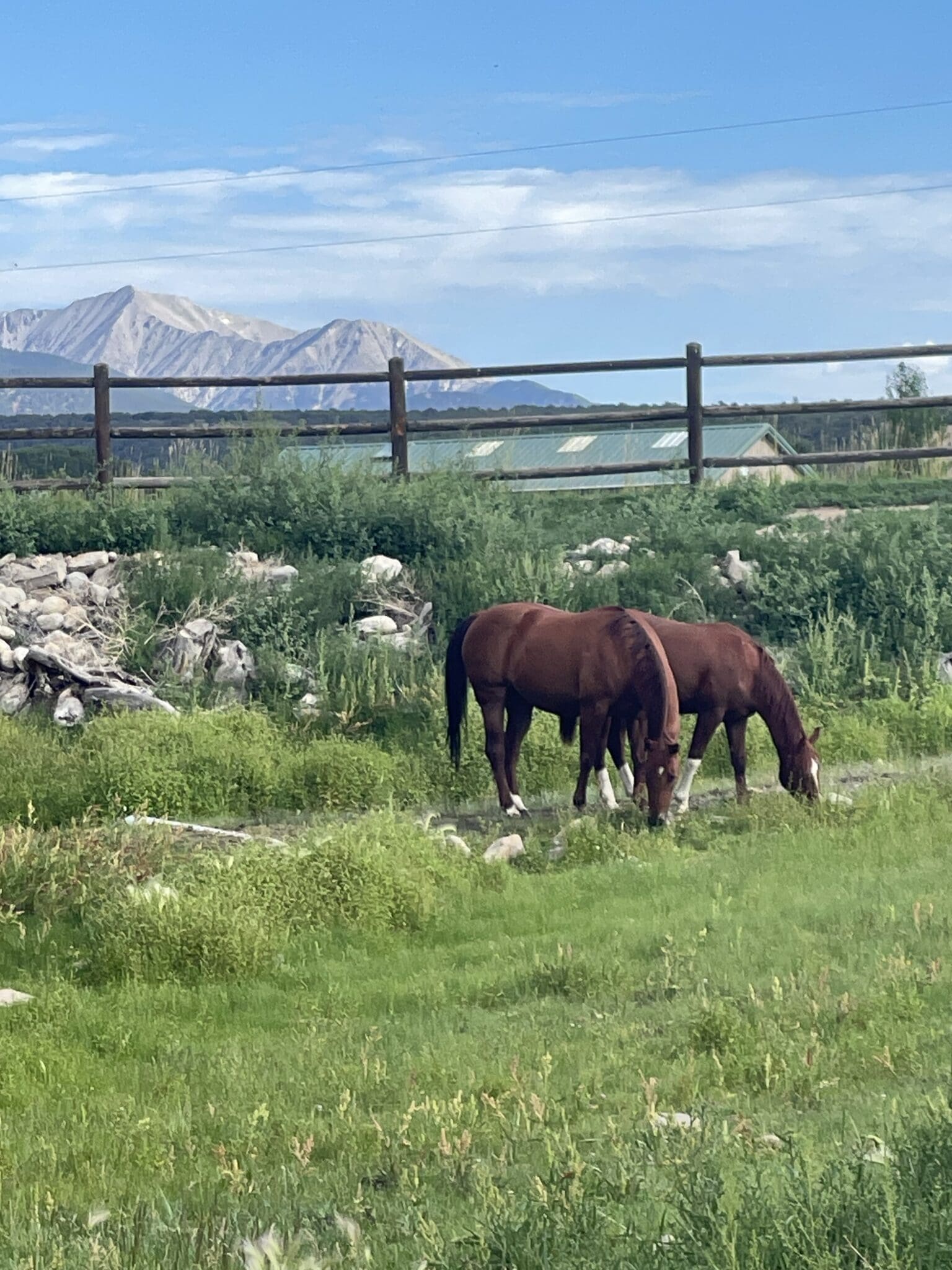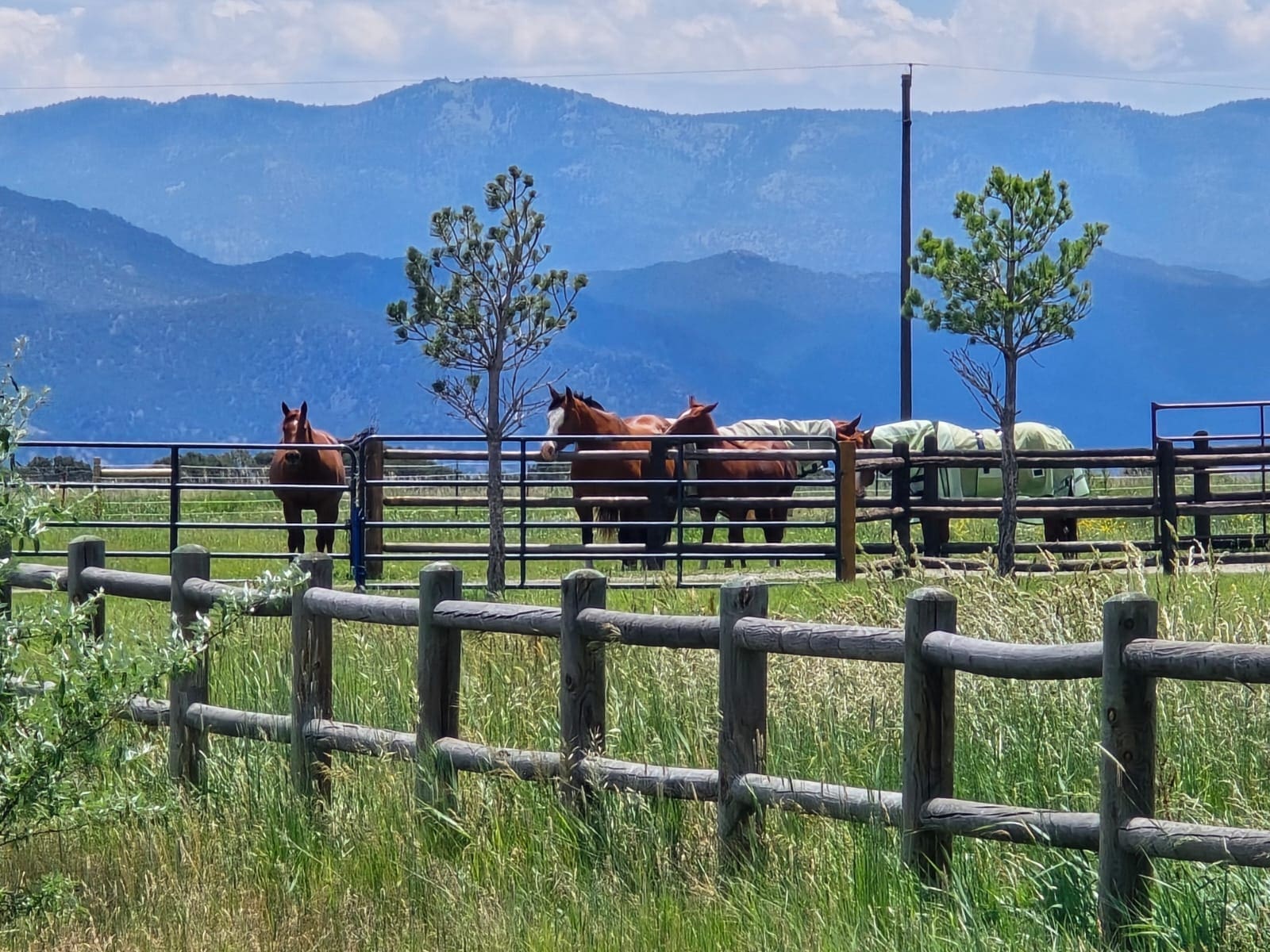I get very “zen” when I am riding—my mind is clear and my thoughts are carried along with the horse’s movement. Riding is my sanctuary, my restoration and where I come up with my best ideas. I wouldn’t be as good at teaching horsemanship to others, if I didn’t have a personal journey with horses myself. It is while I’m riding my own horses—Eddie and Dually—that I have the time to relax, be creative, and think about new ways to describe the feel of riding a horse.
And so it was while I was riding Eddie in my indoor arena (I sometimes feel more thoughtful and “heady” when riding inside than when distracted by the scenery and trail obstacles outdoors), that I had an interesting thought: riding horses at a high level is just like flying a helicopter. Random, you think? Let me explain my thought process.
A History of Flight
My father was a highly accomplished pilot; it was not his profession but it was his passion (one of many including horses, boating and the great outdoors).. After a few years of flying fixed-wing air ambulance out of Jackson Hole in all weather conditions because my dad thought it would be the ultimate experience as a pilot, he decided flying helicopters would be a good next accomplishment.
I remember him telling me about this experience decades ago—how different a fixed-wing craft is from a whirly-bird and how complicated it was to fly this machine. Since I jokingly refer to myself as “my father’s only son” (at least until my much-younger brother came along), I was the one who was with him for all his flying pursuits. I had learned to fly at a very young age (as well as saddle a horse, bait a hook and dock the boat). When other kids were being taught to parallel park, my dad and I were doing touch-and-go’s in a Cessna 150 and he was yelling at me for landing at too high a speed.
I’ve never piloted a helicopter but I have watched skilled helicopter pilots navigate the back country and mountain terrain while flying with them to heli-ski. What an experience and what a flight to watch firsthand. The maneuvers are amazing; a pilot’s hands know instinctively where to guide the fast-responding aircraft.
What strikes me most about the comparison between helicopters and riding? I remember my dad saying: to fly a helicopter, you have to make constant adjustments to attitude and altitude with two hands and two feet—each one adjusting in a totally different way. That is the precise comment that makes my mind wander and continually compare helicopters and riding horses.
For decades, I have pondered my dad’s comments–especially after he declared that flying helicopters was too challenging for him and he would prefer to stick to fixed-wing aircraft. When I heard my dad say that, after a lifetime of convincing me he could do anything he set his mind to and handle any adverse situation, it made an impression on me. There was something in this world that seemed too much of a challenge. If my dad thought that, it must be a challenge worth thinking about.
Controls in the Arena
Fast-forward to the other day when I was riding my young hose Eddie, snug in the cocoon of my cozy indoor arena—in a hypnotic state of bliss—working at a collected sitting trot in a soft and balanced frame. It felt as if he were on his tippy-toes. Eddie, built more like a line-backer than a ballet dancer and almost finished in his training, was holding himself in this frame, upon my request, with no contact at all on the reins. We were making beautiful, small and bendy circles.
At that moment, he was truly an extension of my body and I felt like I had as much control over his torso, limbs and his feet as I did over my own. To maintain this balance, I would occasionally make the slightest, most imperceptible adjustments with two feet and two hands. My left hand doing something different than my right; my right leg doing something totally different than my left—not with any conscious thought but totally by feel—to adjust attitude and altitude. Release here, constrict there, shortening and lengthening, giving and taking.
That’s when the helicopter association entered my mind. Whether riding at a fine-tuned level or piloting a helicopter, there is finesse and a precision of controls. There is no room for jerking, no room for sharp reactions. While I’d love to compare notes in detail with a helicopter pilot, I think that my own analogy can help you understand and envision the movements and level of control you should strive to have while riding.
Imagine you were up in the air, hovering or flying low and slow, adjusting to the contours of the land. There would be a constant and steady balancing and attitude adjustment of the vessel for acceleration, deceleration, turning or adjusting vertical altitude. To hold that attitude, you would delicately make subtle adjustments with the steering and pedals—someone casually observing probably wouldn’t even notice your slight adjustments—it would all look very smooth. When you’re riding, you are one with your horse and constantly making small adjustments that the finely-tuned horse is quick to respond to. Top riders who look like they aren’t moving at all really are making small corrections and giving the horses subtle cues that the horse is highly tuned in to receive. That ultimate connection and ability to almost “whisper” a cue is the highest level of horsemanship.
I had a very astute student in a clinic who was, in fact, an astronaut and the pilot of two space shuttle missions, who once told me, “Riding a horse is a lot like flying a fighter jet or the space shuttle; it is not the mechanics of using this control or that, but the feeling of strapping the machine onto your own body and flying it as if it were a part of you.”
As you are learning to ride, you must first learn to adjust your balance and rhythm to that of the horse and to use your aids to control his movement—these are mechanics and they must be learned in order to progress–and that takes time. Once you have mastered the mechanics, you and the horse start moving as one and developing the feel of each other and that’s when subtlety and lightness comes into play.
When you watch a highly trained horse and rider perform or see a helicopter land and take off in the most precarious situations, it is as if you are watching a dance between pilot and vessel. Subtle and perfectly timed corrections are at work and the two are moving as one.
Reaching this level in your riding takes time and persistence and a concerted effort to be in better balance with your horse, to communicate better and with softer aids. But even relatively new riders, as they learn to move in concert with their horse and adjust their aids to the horse’s level of response, can learn to feel the thrill of becoming one with their horse. Keep the imagery in mind and make it a goal to give your horse the softest, most precise and meaningful cues—guiding (piloting) your horse with precision.
Enjoy the ride,
Julie



